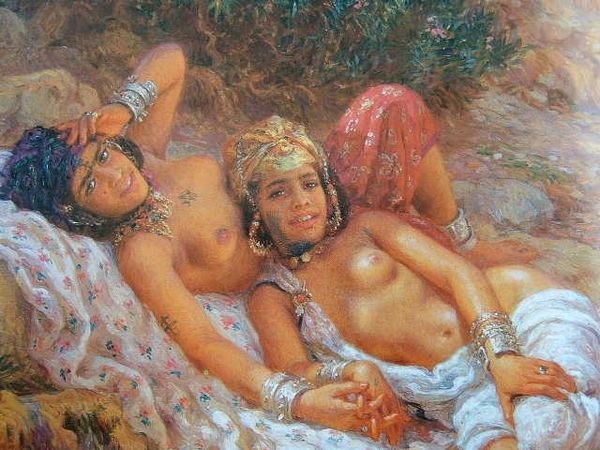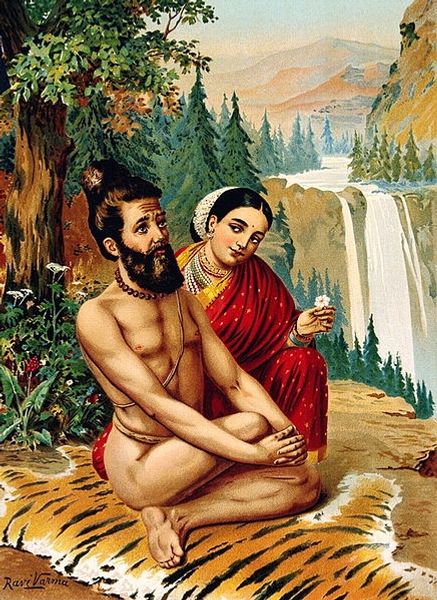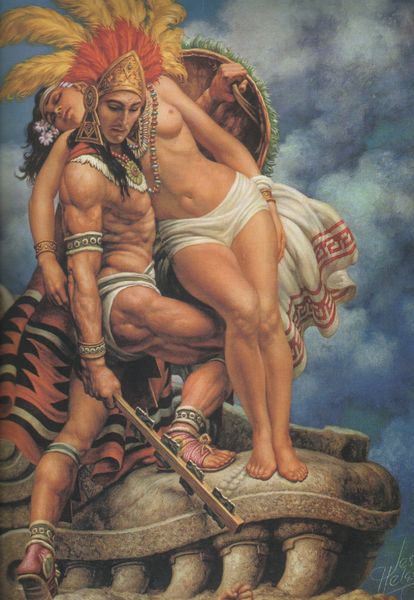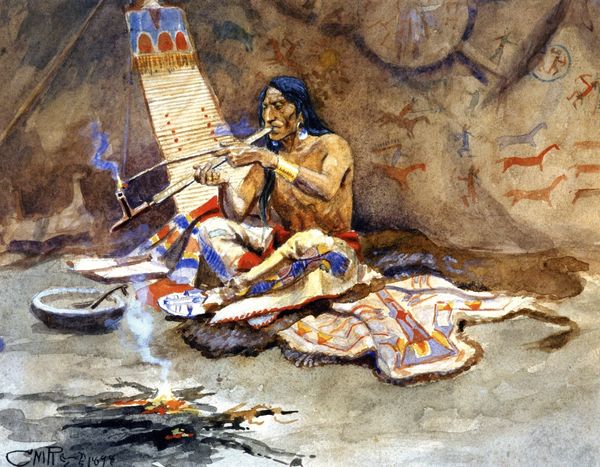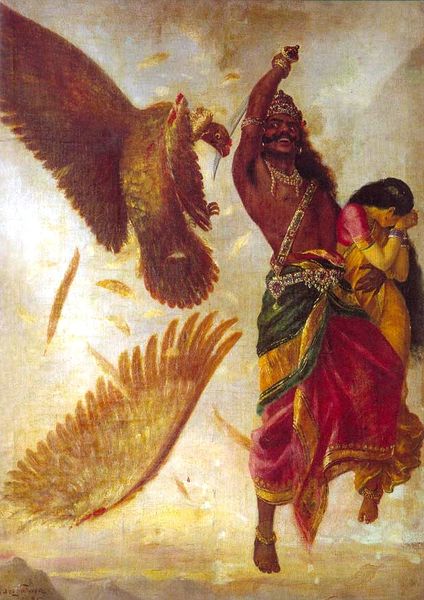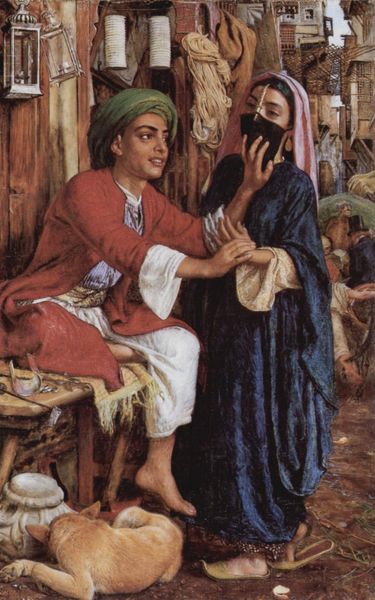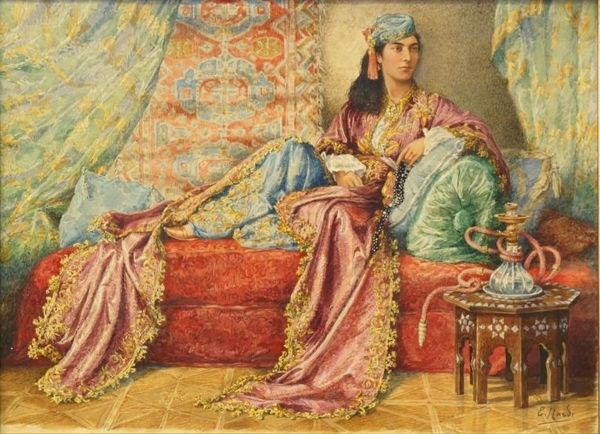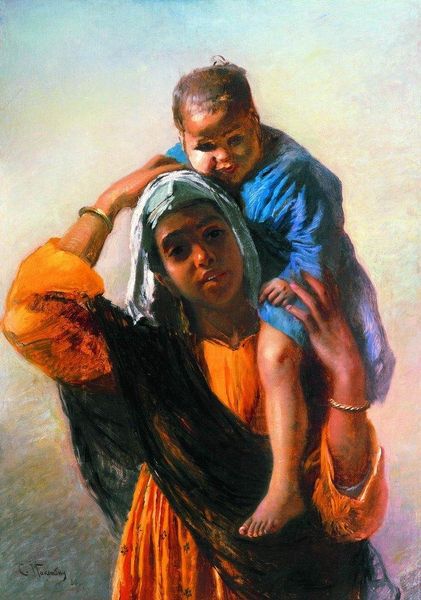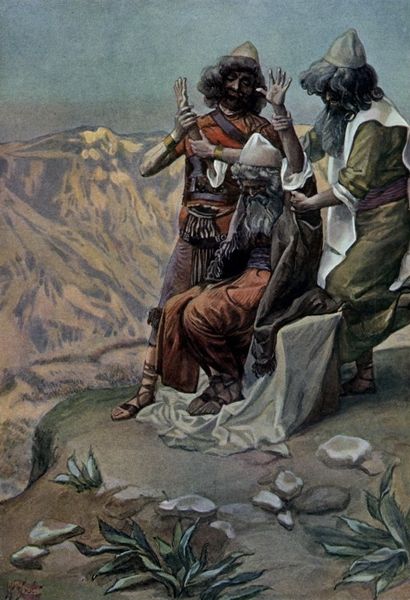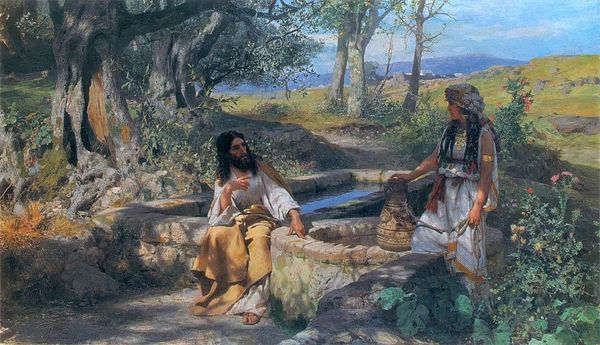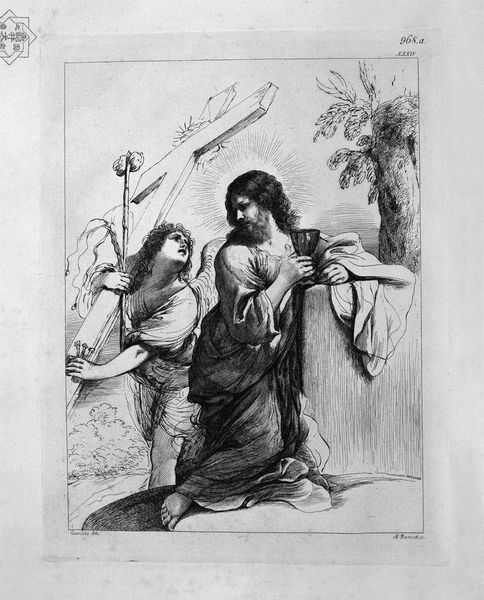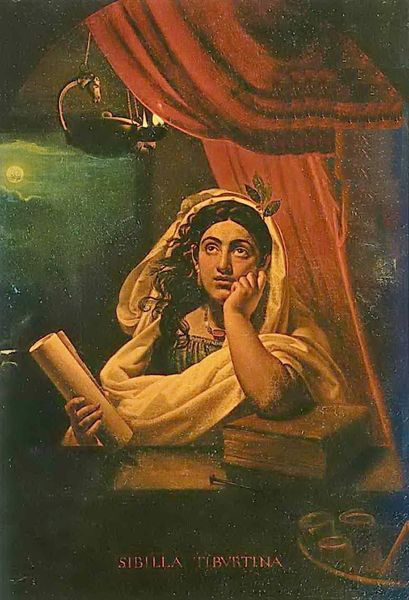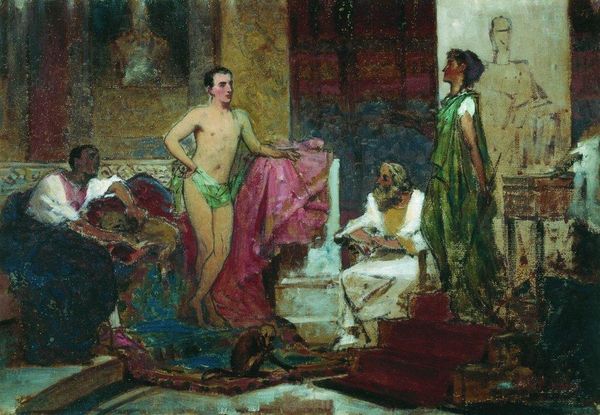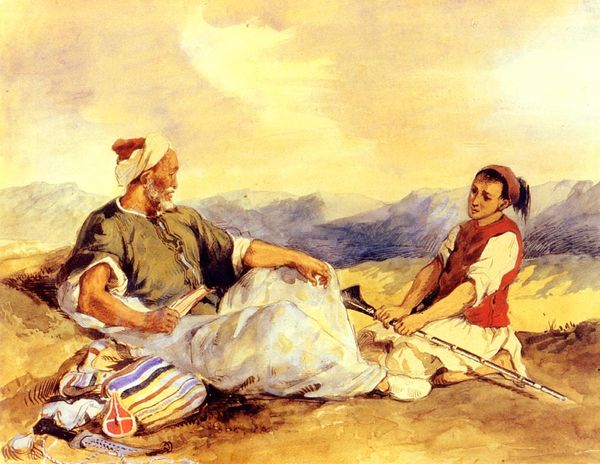
Copyright: Public domain
Curator: Looking at "Santhanu and Matsyagandhi" by Raja Ravi Varma, painted in 1890 using oil on canvas, the narrative is instantly captivating, don’t you think? Editor: It’s arresting. The contrast between the textures, the man’s opulent garb against the simple drape of the woman, hints at a negotiation of power, or perhaps a transaction. Curator: Absolutely. Varma's blending of Western academic art with Indian subjects is evident here. Notice the depiction of fabric, jewelry, and the king's royal attire; he’s rendering the labor involved in production with an amazing accuracy and also showing an idealized representation of the era's aristocratic consumerism. Editor: And what is interesting to me, in thinking about audiences then and now, is how this image plays with and perhaps complicates the male gaze. The demure yet defiant posture of Matsyagandhi speaks volumes. Varma is navigating gendered expectations. Curator: He's very deliberate about his figures' positioning, certainly. How do you feel that intersects with colonial power dynamics at play? Editor: Inevitably, Varma's work was being created during a period when Indian identity was constantly being negotiated against colonial standards. This depiction walks a line—attempting to preserve elements of traditional narratives while perhaps subtly conforming to certain orientalist tropes palatable to a Western audience. How the painting served both Indian nationalist sentiment and British patronage. Curator: Agreed. Examining his access to specific materials and his choice of oil paints shows he was creating work to insert Indian artists in a predominantly white-dominated space. How his workshop expanded its processes to offer affordable oleographs is also quite impressive to note! Editor: Definitely a complex legacy. This isn’t just a straightforward retelling of mythology, it's a visual document embedded in specific historical and sociopolitical conditions. Seeing Matsyagandhi, one has to ask, “Whose story are we really seeing?” Curator: Food for thought. The power and limits of art indeed. Editor: Absolutely. Let’s consider the story each material has to tell and unpack these visual legacies together.
Comments
No comments
Be the first to comment and join the conversation on the ultimate creative platform.
